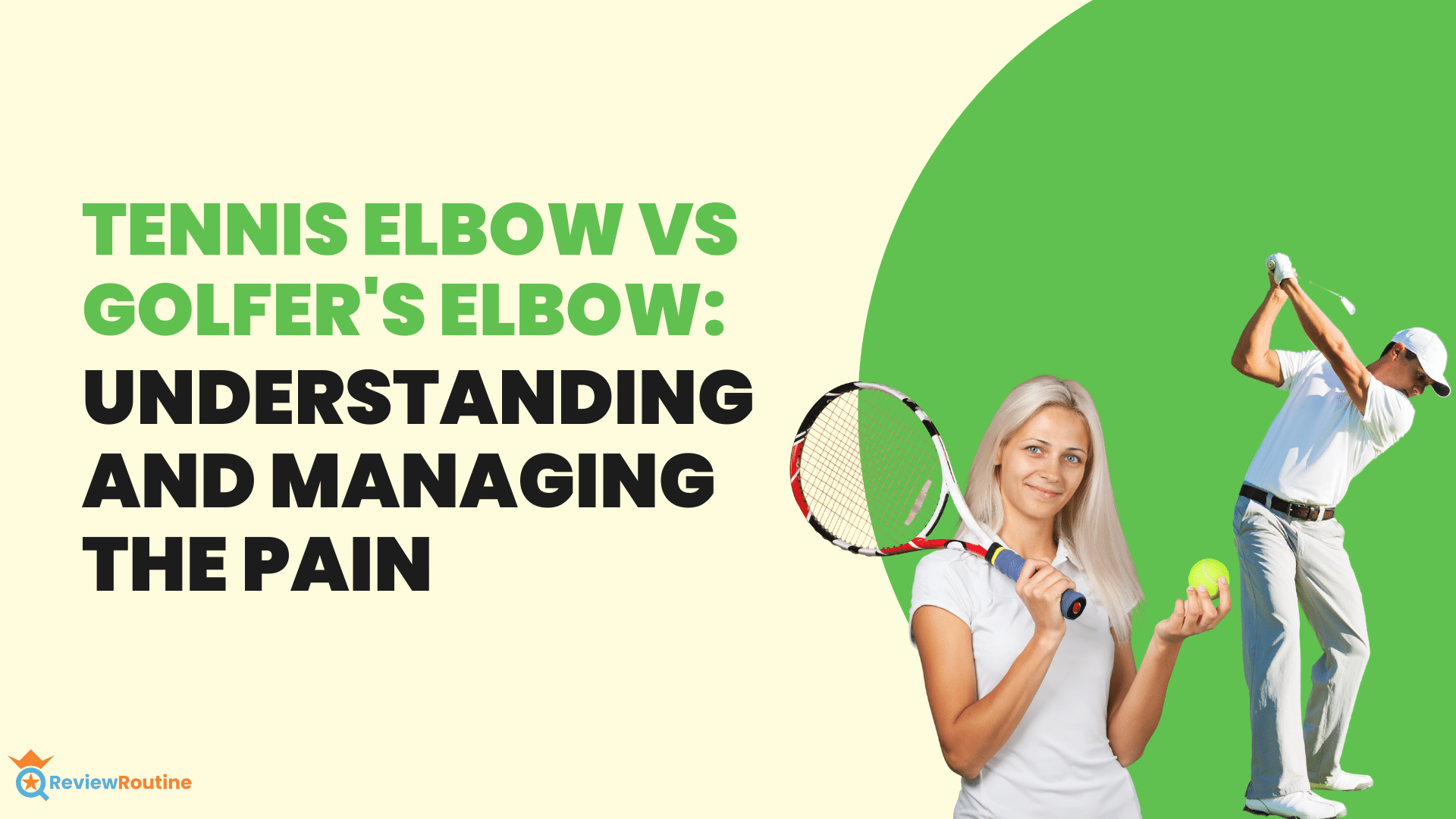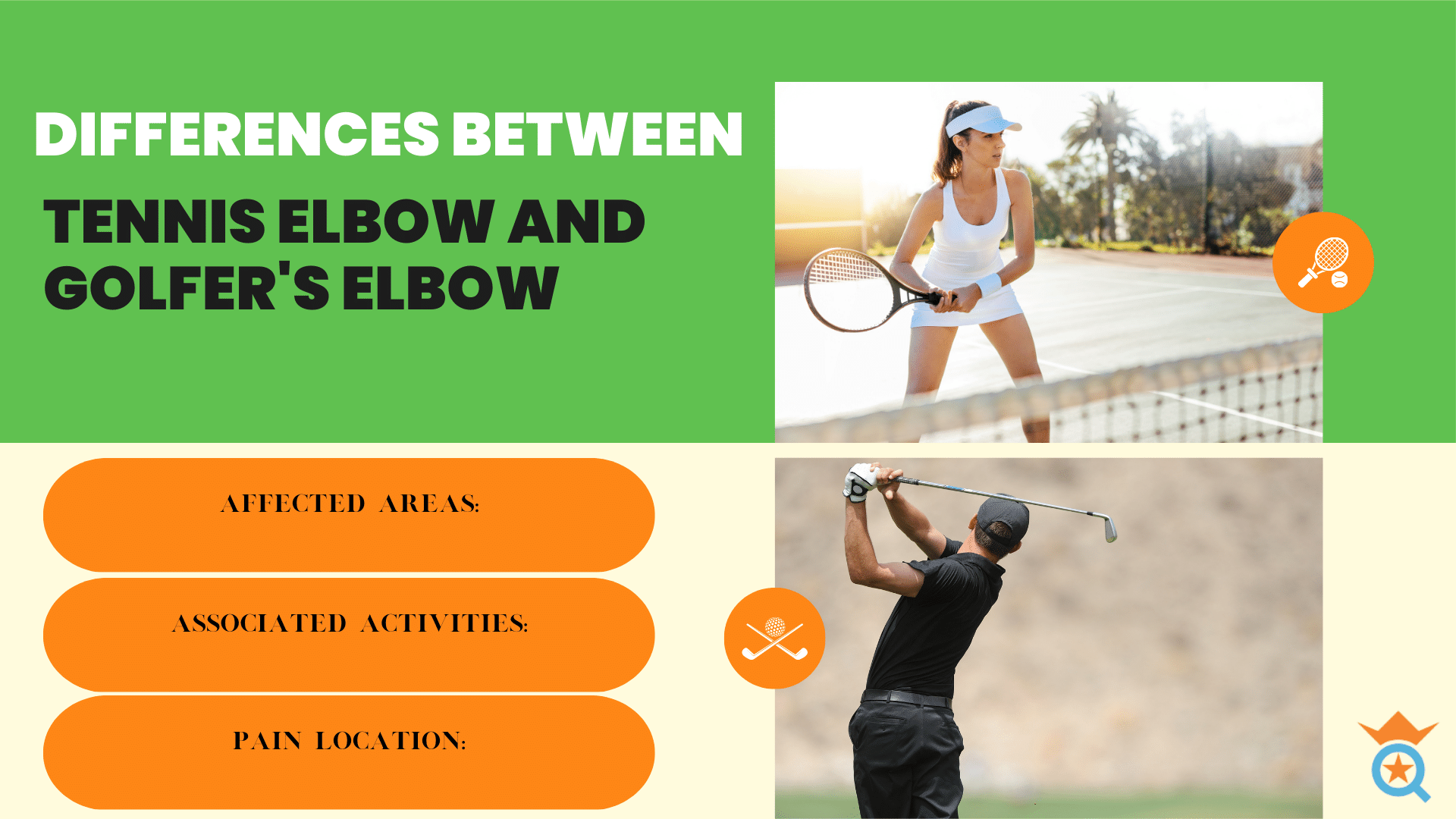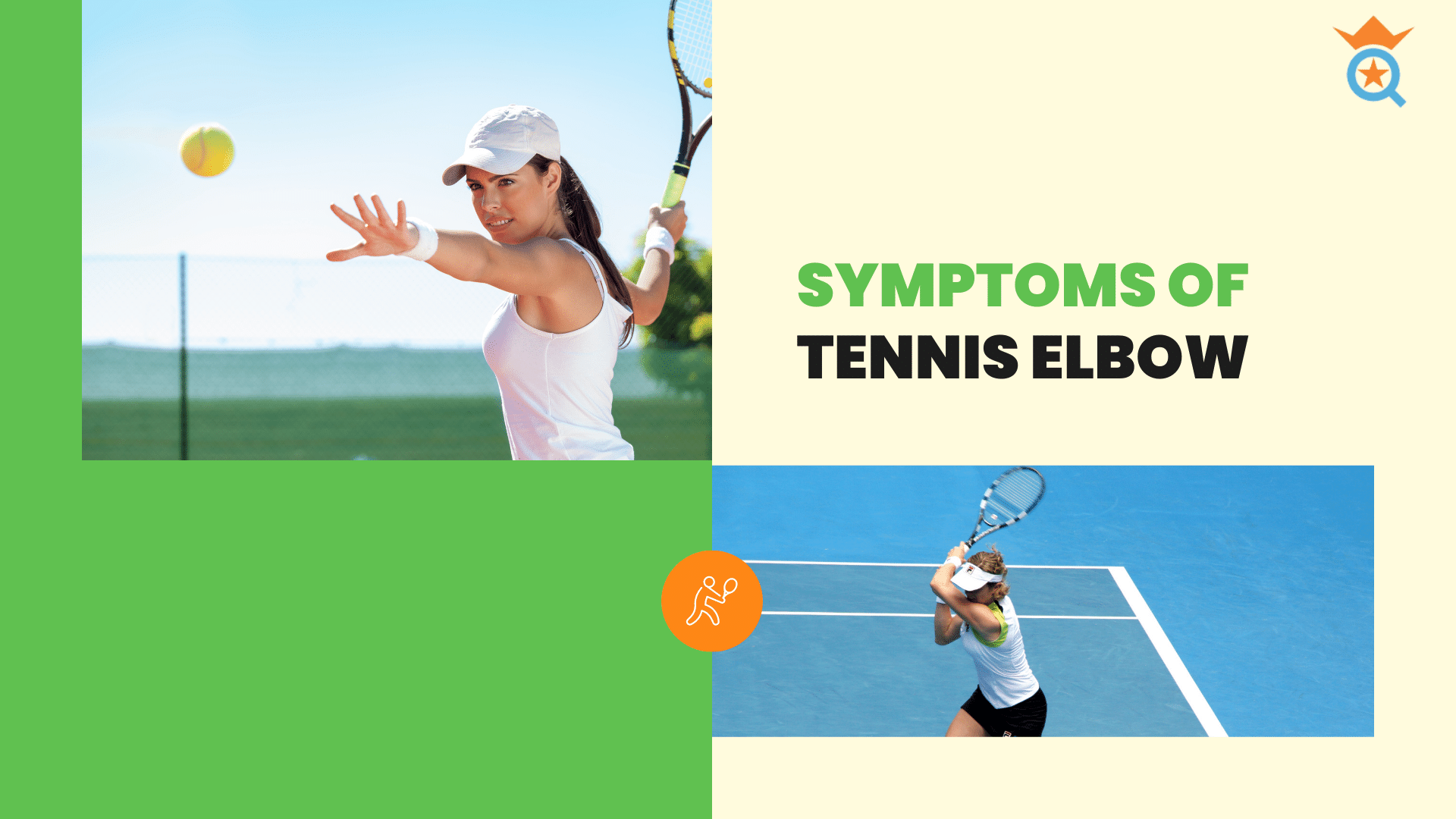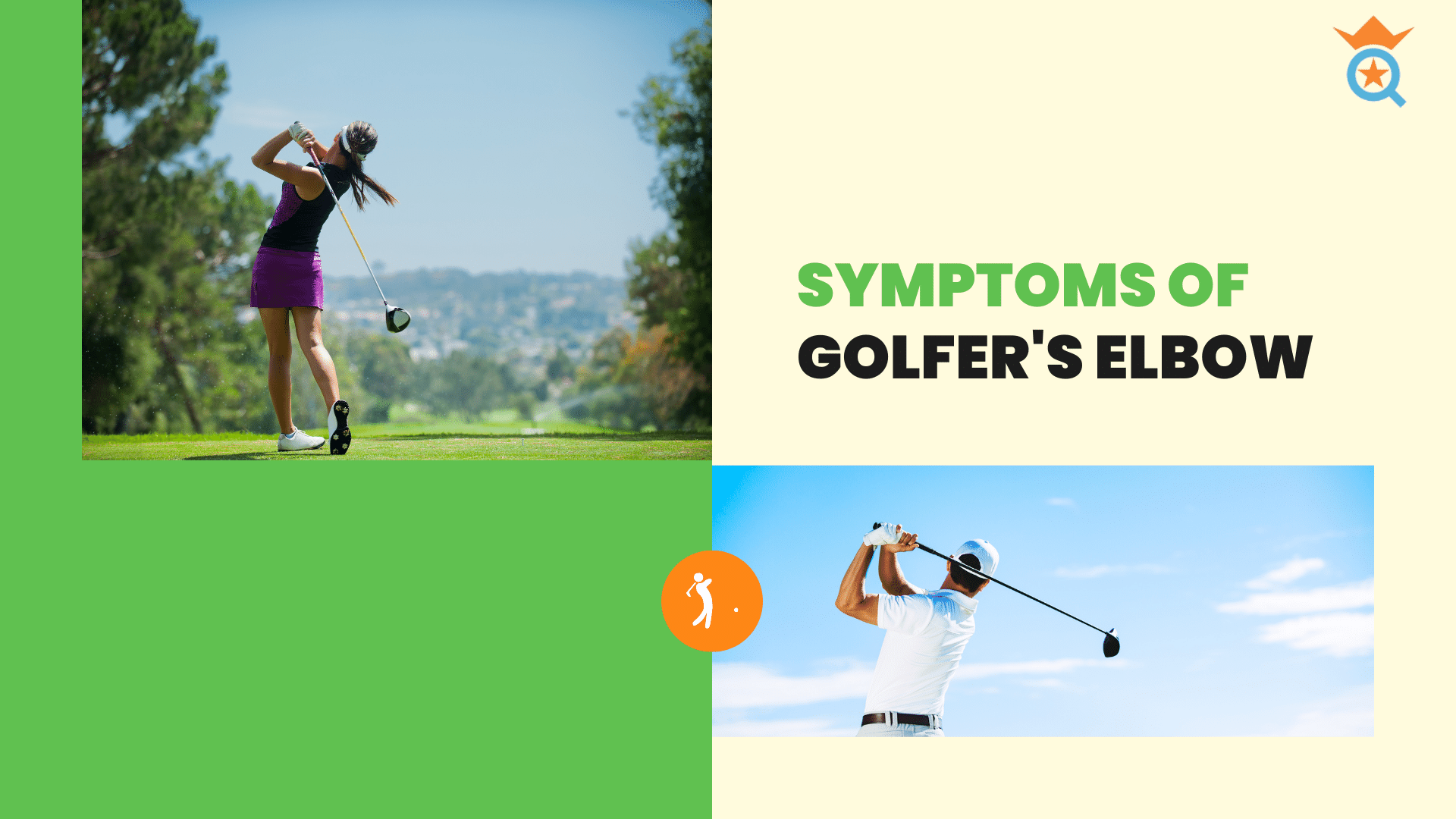Hello, extraordinary achievers! It's time to unlock the secrets behind two of the most common, yet often misunderstood overuse injuries that can impact your life: Tennis Elbow and Golfer's Elbow.
You may be saying, "But I don't even play tennis or golf!" at this point. Indeed, whether or not those activities are related to sports, these illnesses can harm anyone doing repetitive motions.
In this journey to self-discovery, we will explore the differences between golf and tennis elbow, empowering you with the knowledge and tools you need to overcome these challenges and live a life without limits.
Let's unleash the power within and conquer these hurdles together!

Differences Between Tennis Elbow and Golfer's Elbow
As we delve deeper into understanding Tennis Elbow and Golfer's Elbow, it's crucial to recognize the key differences between these two conditions. By gaining clarity on the distinctions, you'll be better equipped to take control of your life and eliminate the pain that's been holding you back.
Let's break down the primary differences between Tennis Elbow (lateral epicondylitis) and Golfer's Elbow (medial epicondylitis) so you can unleash your potential and thrive.
Affected Areas:
- Tennis Elbow: This condition targets the lateral epicondyle, which is the bony bump on the outside of your elbow. It's where the tendons of your forearm muscles attach to the bone.
- Golfer's Elbow: On the other hand, the golfer's elbow impacts the medial epicondyle, which is the bony protrusion on the inside of your elbow. Your forearm muscles are joined to the bone at this point by tendons.
Associated Activities:
- Tennis Elbow: Although it's commonly associated with tennis, this condition can result from various repetitive activities that strain the forearm muscles, such as painting, typing, or even playing musical instruments.
- Golfer's Elbow: While the name suggests a link to golf, this condition can also arise from other activities involving repeated wrist flexions or forearm rotation, like weightlifting, gardening, or even daily tasks that involve gripping or lifting objects.
Pain Location:
- Tennis Elbow: The pain primarily manifests on the outer part of the elbow and may radiate down the forearm.
- Golfer's Elbow: Conversely, the pain is typically experienced on the inner side of the elbow and may extend along the inner forearm.
By understanding these critical differences, you are now one step closer to breaking free from the shackles of Tennis Elbow and Golfer's Elbow. It's time to use your newly acquired knowledge to your advantage, take charge of your life, and realize your full potential. We will conquer these challenges as a team and emerge more powerful than ever!

Symptoms of Tennis Elbow
Before we can effectively combat the Tennis Elbow pain it brings, it's essential to recognize the common symptoms associated with this condition. By pinpointing these signs, you'll be better equipped to take the necessary steps toward recovery and prevent Golfer's Elbow from affecting your life.
The typical Tennis Elbow symptoms include:
- Pain and discomfort on the outer part of the elbow
- Tenderness in the elbow and forearm areas
- Stiffness in the elbow, making it difficult to extend the arm
- Weakness in the forearm and wrist
- Pain that worsens when gripping objects, lifting, or performing repetitive activities
Armed with the knowledge of these symptoms, you're now prepared to tackle Tennis Elbow head-on and begin your journey toward healing and regaining control of your life. Stay vigilant, and remember that understanding these symptoms is the first step toward a brighter, pain-free future.

Symptoms of Golfer's Elbow
Now that we've explored the symptoms of Tennis Elbow, it's time to shift our focus to its counterpart, Golfer's Elbow. Although these conditions may seem similar, understanding the unique symptoms of a Golfer's Elbow will enable you to differentiate between the two and seek the most appropriate treatment.
The typical symptoms of Golfer's Elbow, which primarily affects the inside of the elbow, include:
- Pain and discomfort on the inner side of the elbow, sometimes extending along the inner forearm
- Around the medial epicondyle, there may be soreness and edema (the bony bump on the inside of the elbow)
- Stiffness in the elbow, making it challenging to flex or rotate the forearm
- Weakness in the hand and wrist, particularly when gripping objects or making a fist
- Pain that worsens with repetitive activities involving wrist flexion or forearm rotation, such as swinging a golf club or lifting weights
Being able to recognize the distinct symptoms of a Golfer's Elbow is a crucial step in developing a tailored treatment plan. Recognizing these signs can open the door for efficient physical therapy and other therapies that can help you regain control and live pain-free, whether you play tennis, or golf, or simply engage in repetitive activities.

Causes and Risk Factors
As we continue our journey to understand and conquer Tennis Elbow and Golfer's Elbow, it's essential to examine the causes and risk factors associated with these conditions. By identifying the activities and occupations that contribute to their development, you'll be better equipped to prevent these issues and maintain a pain-free existence.
Both the Tennis Elbow and Golfer's Elbow result from repetitive motions and overuse of the forearm muscles. While tennis players may be more prone to Tennis Elbow, and golfers to Golfer's Elbow, it's important to remember that these conditions can affect anyone engaged in similar activities. Let's delve deeper into the specific causes and risk factors for each:
Tennis Elbow:
- Repetitive motions involving wrist extension, such as swinging a tennis racket or using a paintbrush
- Occupations that require constant gripping and lifting, such as construction or assembly line work
- Insufficient rest or recovery periods between activities that strain the forearm muscles
Golfer's Elbow:
- Repetitive activities involving wrist flexion and forearm rotation, like swinging a golf club or using a hammer
- Occupations that necessitate prolonged gripping or lifting, such as gardening, plumbing, or carpentry
- Poor technique or form during activities that require wrist or forearm movements, increases the risk of developing the condition
Understanding these causes and risk factors is instrumental in creating effective prevention strategies. By being mindful of your actions, incorporating proper rest and recovery periods, and seeking guidance on correct techniques, you can minimize your risk of developing a Tennis Elbow or a Golfer's Elbow.
Treatment Options for Tennis Elbow and Golfer's Elbow
When faced with the challenges of Tennis Elbow and Golfer's Elbow, it's crucial to be aware of the various treatment options available. With a comprehensive understanding of the possible treatments, you can make informed decisions and take the necessary steps toward healing and regaining control over your life.
1. Immediate Treatment
Initiate your recovery by prioritizing rest and reducing activities that exacerbate the pain. Apply ice to the affected area to minimize swelling and inflammation.
Anti-inflammatory drugs available without a prescription, such as ibuprofen or aspirin, can also be effective for pain management and inflammation reduction.
2. Professional Guidance
Seek expert advice to ensure you're using proper techniques in sports or other activities that involve repetitive wrist and forearm motions.
For example, consult a golf or tennis professional to optimize your grip and stroke mechanics.
3. Stretching and Strengthening
Incorporate regular stretching and strengthening exercises for your forearm muscles.
These exercises can help improve flexibility, build muscle strength, and ultimately reduce the strain on the affected tendons.
4. Cortisone Shots and Physical Therapy
Your doctor might suggest a cortisone injection in some circumstances to reduce pain and inflammation.
They may also recommend physical therapy to you if you want to manage your illness more successfully through specific workouts and treatment approaches.
5. Surgery
If conservative treatments prove unsuccessful after a year, surgery may be considered a last resort.
Surgical intervention can remove damaged tissue or reattach the affected tendon to the bone, offering relief from persistent pain.
6. Elbow Braces
Elbow braces can provide valuable support and pain management for those dealing with Tennis Elbow or Golfer's Elbow. By rerouting pressure away from the wounded location, these braces aid in healing without limiting blood flow.
By exploring these treatment options and working closely with your healthcare provider, you can develop a tailored plan to address your specific needs, ultimately guiding you toward a pain-free future and empowering you to rediscover your full potential.

Wrapping Up
In our quest to overcome the obstacles posed by Tennis Elbow and Golfer's Elbow, we've delved into the differences between these conditions, recognized their unique symptoms, explored the causes and risk factors, and examined the available treatment options. By comprehending these distinctions, we empower ourselves to make informed decisions and seek appropriate treatments, ensuring a swift and successful recovery.
When faced with the challenges of Tennis Elbow or Golfer's Elbow, remember that knowledge is power. Understanding these conditions and their impact on your life is the first step in taking control and reclaiming your potential.
With the right treatment plan and a proactive approach to recovery, you'll be well-equipped to return to your normal activities, free from pain and limitations.
As you continue on this journey, don't underestimate the power of persistence and determination. Embrace the lessons learned and let them be a testament to your resilience. In doing so, you'll not only overcome these temporary setbacks but emerge stronger, ready to conquer your goals and unleash the limitless potential within you.
FAQs
How do I know if I have tennis or a golfer's elbow?
To determine whether you have a tennis elbow or a golfer's elbow, pay close attention to the location of your pain. If the pain is on the outside of your elbow, it is likely tennis elbow. It's probably a golfer's elbow if the pain is on the inside of your elbow. Remember that for a precise diagnosis and suitable treatment options, you must speak with a medical practitioner.
What is the fastest way to cure golfers' elbows?
The fastest way to cure golfer's elbow involves a combination of approaches that target pain relief, inflammation reduction, and tissue healing. Follow these steps for a quick recovery:
- Rest: Avoid activities that exacerbate your pain, such as golfing or other repetitive tasks, until the pain subsides.
- Ice: Apply ice packs to the affected area for 15-20 minutes, three to four times a day for several days to reduce inflammation.
- Brace: Wear an elbow brace to provide support and alleviate strain on the affected tendons.
- Stretch and Strengthen: Incorporate stretching and strengthening exercises for your forearm muscles to improve flexibility and build strength, promoting faster healing.
- Anti-inflammatory Drugs: Drugs like ibuprofen, which are available over the counter, can help lessen discomfort and inflammation.
Remember that individual healing times may vary, and it's essential to consult a medical professional for personalized advice and treatment recommendations.
What muscles are affected by the tennis elbow?
Tennis elbow affects the forearm muscles and tendons associated with the extensor carpi radialis brevis (ECRB) muscle. The ECRB is responsible for extending the wrist and stabilizing it during various activities. Tennis elbow occurs when repetitive arm and wrist movements lead to overuse and inflammation of the tendons connecting the ECRB muscle to the lateral epicondyle, a bony bump on the outside of the elbow. Other forearm extensor muscles and tendons may also be involved in tennis elbow, but the ECRB is the most commonly affected.
How long does it take to recover from tennis and golf elbow?
Tennis elbow and golfer's elbow recovery times might vary based on the severity of the condition and the patient's response to treatment. Generally, it takes about six weeks to recover from tennis or golf elbow with proper rest and treatment. However, in some cases, recovery might take several months or even longer. It's important to follow your healthcare provider's advice and adhere to a treatment plan that includes rest, ice, anti-inflammatory medications, and potentially physical therapy to ensure the best possible outcome. Remember, patience and consistency are key when treating tennis or golf elbow.








